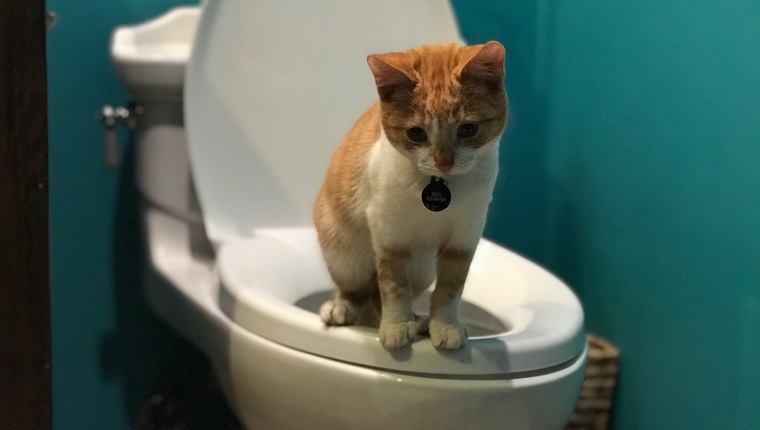Reasons Flushing Cat Poop Down Your Toilet May Cause Problems - Tips for Safe Disposal
Reasons Flushing Cat Poop Down Your Toilet May Cause Problems - Tips for Safe Disposal
Blog Article
Just how do you really feel when it comes to Don’t flush cat feces down the toilet?

Intro
As pet cat owners, it's necessary to bear in mind how we take care of our feline buddies' waste. While it may seem practical to purge pet cat poop down the commode, this technique can have detrimental consequences for both the environment and human health and wellness.
Ecological Impact
Flushing cat poop presents harmful virus and parasites into the supply of water, posing a substantial risk to water ecosystems. These contaminants can negatively impact marine life and compromise water high quality.
Health and wellness Risks
In addition to environmental issues, flushing cat waste can also pose health threats to human beings. Cat feces might consist of Toxoplasma gondii, a bloodsucker that can create toxoplasmosis-- a potentially serious health problem, specifically for expecting ladies and individuals with weakened body immune systems.
Alternatives to Flushing
Fortunately, there are safer and a lot more responsible means to take care of cat poop. Consider the complying with choices:
1. Scoop and Dispose in Trash
The most typical technique of taking care of feline poop is to scoop it into a naturally degradable bag and toss it in the trash. Make certain to utilize a committed litter scoop and dispose of the waste quickly.
2. Usage Biodegradable Litter
Choose biodegradable cat trash made from materials such as corn or wheat. These trashes are environmentally friendly and can be securely taken care of in the garbage.
3. Bury in the Yard
If you have a backyard, think about burying pet cat waste in a marked location far from vegetable yards and water resources. Make certain to dig deep sufficient to avoid contamination of groundwater.
4. Mount a Pet Waste Disposal System
Invest in an animal waste disposal system specifically designed for cat waste. These systems use enzymes to break down the waste, lowering odor and environmental influence.
Conclusion
Liable animal possession prolongs past offering food and sanctuary-- it likewise entails proper waste monitoring. By refraining from flushing pet cat poop down the commode and going with alternative disposal approaches, we can minimize our ecological impact and secure human health.
Why Can’t I Flush Cat Poop?
It Spreads a Parasite
Cats are frequently infected with a parasite called toxoplasma gondii. The parasite causes an infection called toxoplasmosis. It is usually harmless to cats. The parasite only uses cat poop as a host for its eggs. Otherwise, the cat’s immune system usually keeps the infection at low enough levels to maintain its own health. But it does not stop the develop of eggs. These eggs are tiny and surprisingly tough. They may survive for a year before they begin to grow. But that’s the problem.
Our wastewater system is not designed to deal with toxoplasmosis eggs. Instead, most eggs will flush from your toilet into sewers and wastewater management plants. After the sewage is treated for many other harmful things in it, it is typically released into local rivers, lakes, or oceans. Here, the toxoplasmosis eggs can find new hosts, including starfish, crabs, otters, and many other wildlife. For many, this is a significant risk to their health. Toxoplasmosis can also end up infecting water sources that are important for agriculture, which means our deer, pigs, and sheep can get infected too.
Is There Risk to Humans?
There can be a risk to human life from flushing cat poop down the toilet. If you do so, the parasites from your cat’s poop can end up in shellfish, game animals, or livestock. If this meat is then served raw or undercooked, the people who eat it can get sick.
In fact, according to the CDC, 40 million people in the United States are infected with toxoplasma gondii. They get it from exposure to infected seafood, or from some kind of cat poop contamination, like drinking from a stream that is contaminated or touching anything that has come into contact with cat poop. That includes just cleaning a cat litter box.
Most people who get infected with these parasites will not develop any symptoms. However, for pregnant women or for those with compromised immune systems, the parasite can cause severe health problems.
How to Handle Cat Poop
The best way to handle cat poop is actually to clean the box more often. The eggs that the parasite sheds will not become active until one to five days after the cat poops. That means that if you clean daily, you’re much less likely to come into direct contact with infectious eggs.
That said, always dispose of cat poop in the garbage and not down the toilet. Wash your hands before and after you clean the litter box, and bring the bag of poop right outside to your garbage bins.
https://trenchlesssolutionsusa.com/why-cant-i-flush-cat-poop/

Do you really like more info about Don’t flush cat feces down the toilet? Make a remark further down. We'd be interested to see your ideas about this entry. In hopes that you visit us again before long. So long as you liked our blog entry kindly be sure to pass it around. I am grateful for your time. Please visit our blog back soon.
Go Services Report this page